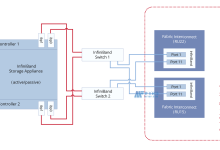linux SVN User: A Guide to Version Control in a Linux Environment
As a Linux user, version control is critical to ensuring that your work is saved and backed up correctly. SVN, or Subversion, is an excellent tool that you can use to manage your version control in a Linux environment. In this guide, we will provide an overview of SVN and show you how you can use it to manage your code effectively.
Installing SVN
The first step to using SVN is installing it on your Linux machine. The installation process will depend on your Linux distribution, but you can typically install SVN by running the following command in your terminal:
sudo apt-get install subversion
Once the installation is complete, you can proceed with setting up your repository.
Setting Up a Repository
A repository is a central location where you can store your code, along with all its revisions. To set up a repository, follow these steps:
1. Create a directory on your Linux machine where you want to store your repository. For example, you can create a directory called ‘repos’ in your home directory.
mkdir ~/repos
2. Initialize the repository using the ‘svnadmin’ command.
svnadmin create ~/repos/myproject
3. Set the permissions on the repository directory, so that the SVN user can access it.
sudo chown -R www-data:www-data ~/repos/myproject
4. Start the SVN server using the ‘svnserve’ command.
svnserve -d -r ~/repos/
You have now set up your repository and are ready to start managing your code versions.
Adding Files to the Repository
You can add new files to the repository using the ‘svn import’ command. For example, if you have a project directory called ‘myproject’ that you want to add to the repository, use the following command:
svn import myproject file:///home/user/repos/myproject -m “Initial Import”
This command imports the ‘myproject’ directory into the repository, located at /home/user/repos/myproject.
Checking Out Code
To work on your code, you need to check it out from the repository. To check out the code, use the following command:
svn checkout file:///home/user/repos/myproject myproject
This command checks out the code from the repository and creates a local copy in the ‘myproject’ directory. You can then edit the files in the local directory, and commit any changes back to the repository.
Committing Changes
After making changes to the code, you can commit them back to the repository using the ‘svn commit’ command. For example, if you have made changes to a file called ‘myfile.txt’, use the following command:
svn commit -m “Updated myfile.txt” myfile.txt
This command commits the changes to the ‘myfile.txt’ file back to the repository, along with a commit message describing the changes.
Conclusion
In this guide, we have shown you how to use SVN to manage your code versions in a Linux environment. By setting up a repository, checking out code, and committing changes, you can ensure that your work is saved and backed up effectively. SVN is an easy-to-use tool, and once you have mastered its basics, you can start using more advanced features like branching and merging to manage your code even more efficiently.

 国外主机测评 - 国外VPS,国外服务器,国外云服务器,测评及优惠码
国外主机测评 - 国外VPS,国外服务器,国外云服务器,测评及优惠码












